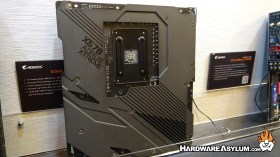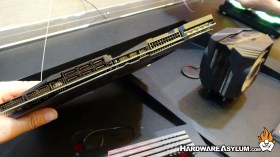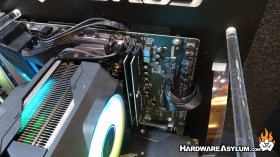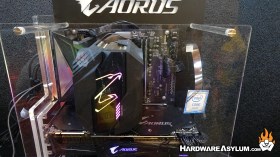Gigabyte AMD X570 Motherboards are Ready for Overclocking
Author: Dennis GarciaIntroduction
The AMD 3rd Generation Ryzen has been a big factor in what motherboard makers where showing during Computex 2019 and Gigabyte is no exception. There are several different levels when it comes to the new Aorus motherboard lineup starting with the Xtreme.
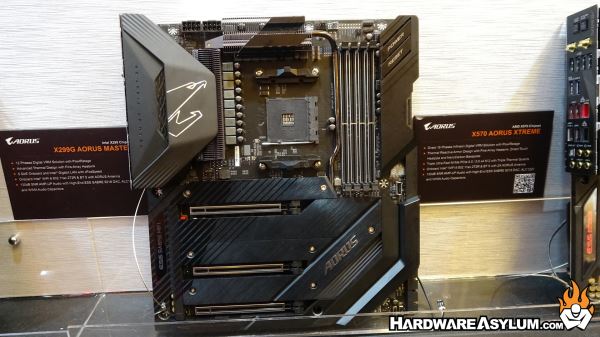
Much like on the Intel side the Xtreme is the top of the line with all the bells and whistles. It features a full coverage shroud, 100% 90 degree connections and a full metal backpate. Across the front you’ll see the new VRM design that is no longer using phase doublers and will make the VRM more efficient and slightly later then previous designs.
Onboard buttons and overclocking controls are available and now feature an integrated design to match the rest of the board.
Down from the Xtreme you have the Master and Ultra. These boards are basically identical however one is fully setup to do overclocking while the other supports many UEFI level overclocking controls it lacks the onboard controls extreme overclockers need.
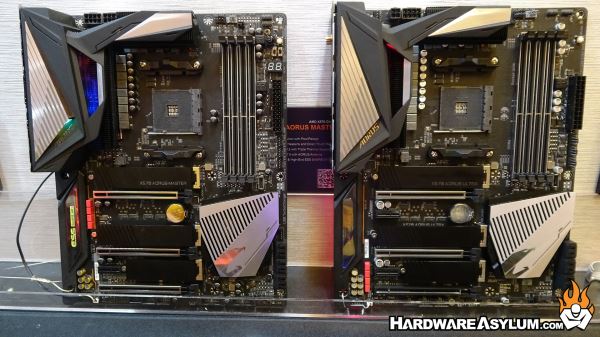
The intent is that each motherboard will fit the needs of the user in each segmen. If the user is experimenting with overclocking and wants to spend the weekends hunting for records then the Master is a perfect choice. If the user really just wants to enjoy what Zen 2 can deliver and might tweak things from time to time then Ultra will save them some bucks and deliver what they need.
One of the big announcements from the AMD Computex Keynote was that Zen 2 will support PCIE Express Gen 4. Gen 4 is considerably faster and will go far to speed up graphics and storage performance when connected directly to the PCI Express bus. To really amp things up Gigabyte has developed the first ever 8TB NVMe SSD.
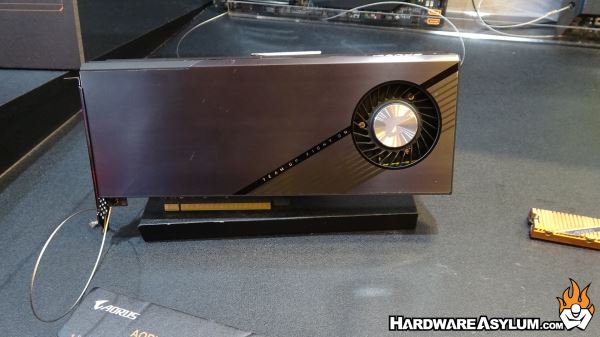
This drive requires a 16x PCI Express slot to operate and will deliver over 15000 MB/s of sequential read and write performance on the Gen 4 interface.
To accomplish this there are 4x 2TB M.2 NVMe SSDs on a single card that are then RAID’ed together to create a single 8TB drive.
The final item is the resurgence of the SOC. Readers of Hardware Asylum and Ninjalane before that will know I was there when the first SOC motherboard was released and have followed the platform for years. Sadly, SOC went away a few years back however, there have been rumors that the product line lives.
Here we have a Z390 SOC motherboard with a Core i9 9900k overclocked to 5Ghz running DDR4-4800 memory. This board is not likely to make it to market but I’m glad to see that the internal engineers are still fighting to bring it back.

